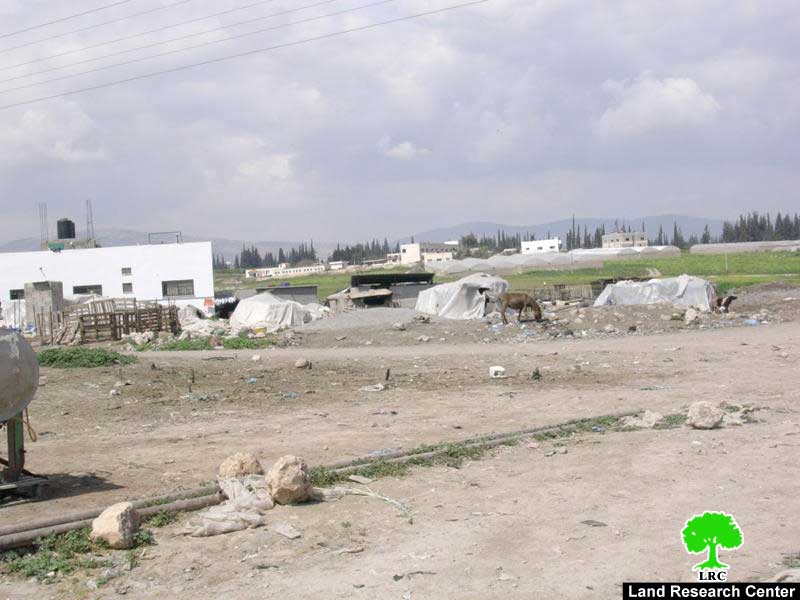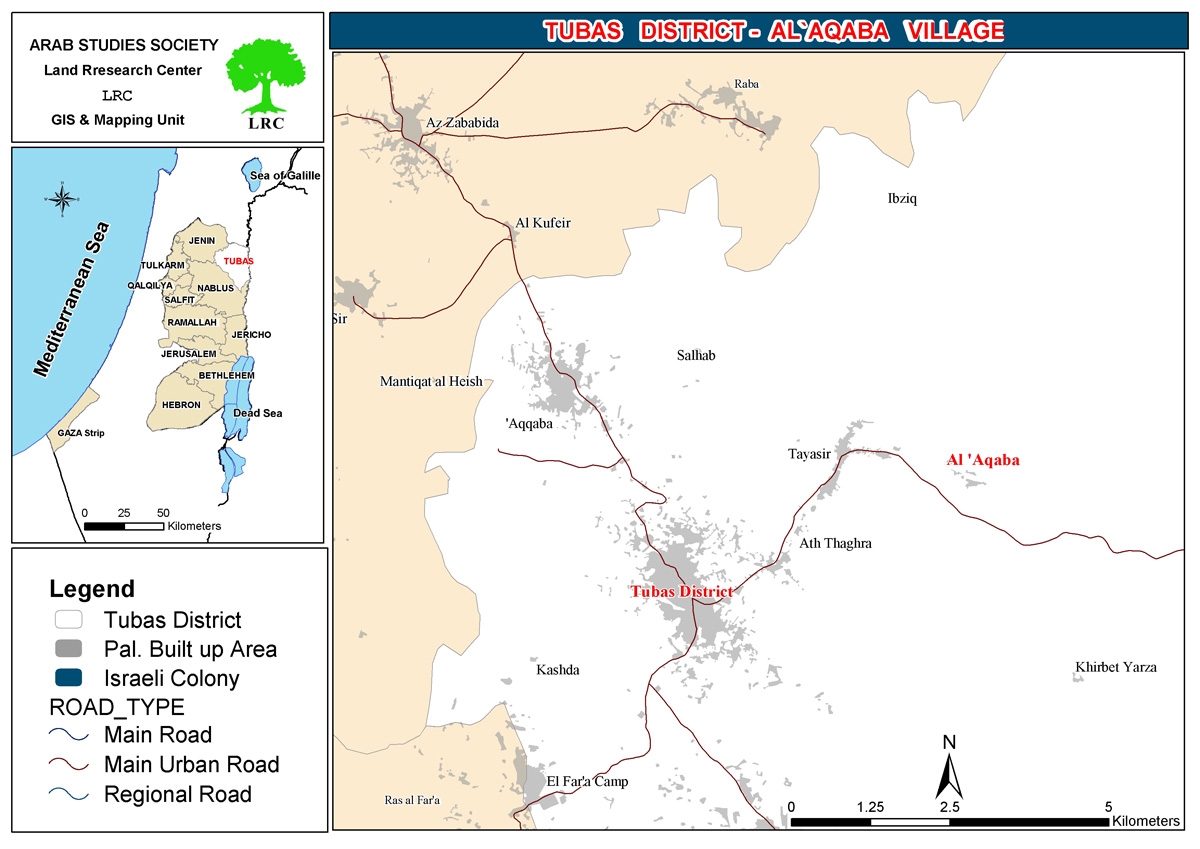Israeli occupation forces are not contended with transferring Palestinian cities and villages into small isolated cantons through a series of closures, checkpoint and the Racist Isolation Wall. They are preventing thousands of Palestinians from accessing water sources. Case in point in the village of Al Aqaba in the Governorate of Tubas as it suffers from severe water shortage while Israeli settlers enjoy unlimited amounts of water.

Al Aqaba village does not have a water network. Yet, its residents have exerted a great effort to get their village connected to the water grid which runs only 500 away from their village. However, the grid is controlled by the Israeli Water Company (a.k.a. Makarot) and it used to use the grid to supply water to the nearby Taseifa’ military camp while totally ignoring the humanitarian needs of the village. The village of Aqaba is but one example of the suffering that is felt by all Bedouin and rural areas in the Governorate of Tubas due to the Israeli control of water sources and the prevention of any type of digging for water.
After a great deal of effort and numerous attempts by Al Aqaba Village Council, the dream of becoming connected to the water grid became too close to be converted into a reality when the Japanese Government agreed in the middle of 2008 to supply the village with water tanks and a taker to transport water to the village from Ein Al Fara’ah which is located 20 kilometers away from the village. However, the dream was short-lived as Israeli occupation authorities interfered and blocked the release of these equipment from Ashdod sea port under lame “security” excuses, thus leaving the residents of the village to face a real tragedy especially that they depend on herding and agriculture as the main source of income. Currently, the villagers pay an average of NIS 15 per cubic meters of water to be transported from Ein Al Fara’ah to the village. The price is a huge cost for the 300 residents of the village.
The example of Al Aqaba village is duplicated throughout the West Bank; Official statistics indicate that there 27 Palestinian villages in Nablus Governorate alone that has no water network. This fact comes at a time when Israeli colonists in the West Bank consume 5 times the amount of water consumed by Palestinians. In addition, a report published by the Palestinian Economic Council for Development and Reconstruction (PECDAR) indicated that each Palestinian in the West Bank uses 130 cubic meter of water per year for all intended purposes (household, agriculture and industrial) while his Israeli counterpart consumes 2235 cubic meter of water per year. The report also pointed out that there are 220 Palestinian communities without water networks affecting more than 215,200 Palestinians (i.e. 10% of the total Palestinian population in the West Bank). Those affected find themselves forced to pay large sums of money to get water tankered to them or risk water borne diseases as they depend of getting water from contaminated cisterns and springs.
Al Aqaba Village:
The village is located 6 kilometers east of the city of Tubas in Tubas Governorate. Its built-up area is 40 dunums and is considered part of the village of Tayaseer. Its population, according to the Palestinian Central Bureau of Statistics (PCBS), has reached 304 in 2007. Around 322 dunums of its lands were confiscated throughout the years to build a camp for the Israeli occupation forces.

Since the establishment of the said camp, the agony and suffering of the residents of the village started to increase; the regular training using live ammunition and explosive materials has led to the injury of more than 50 Palestinians and caused death and handicapped to them. One of the handicapped is the current head of the village council. The repeated closures of the villages’ roads has led to the augmentation of the suffering as it led to marked increase in the movement difficulty inside in the village as well as in trying to access it. Moreover, Israeli occupation forces are preventing the natural expansion of the village as these forces refuse to grant any building permits under the pretext that its lands are classified as ‘Closed Military Zones.” As such, most of the structures in the village have received stop work and demolition orders including the only mosque in the village, its only kindergarten (which provides educational services to 120 children) as well as the basic school. As a result, life in the village has become unbearable leading a large number of its residents to leave it due to the relentless on-going Israeli restrictions.
In the year 1999, the residents of the village and their village council filed a case in the Israeli High Court of “Justice” against the Israeli occupation army in order to vacate the military camp. The case was successful in removing the Taseifa’ military camp on the 12
th of June, 2003, which was considered a great victory. Yet, the occupation forces saw that as an insult and started to make life even more difficult for the residents through placing a number of obstacles for them including giving most of the houses in the village stop work and demolition orders. Moreover, these forces have placed the village under curfew repeatedly, physically beating its residents and confiscated their lands.
For more information about the Israeli violations vis-à-vis Al Aqaba village, please refer to the following Land Research Center’s cases:
::::::::::___
[2] Al Aqaba Village Council

